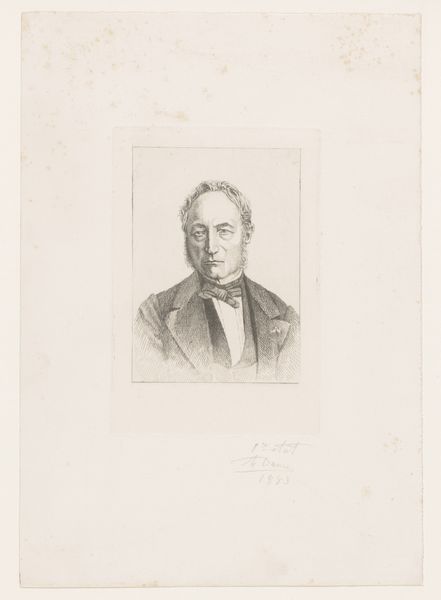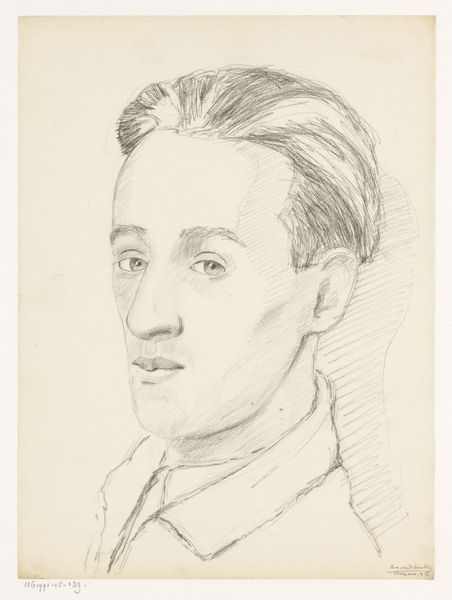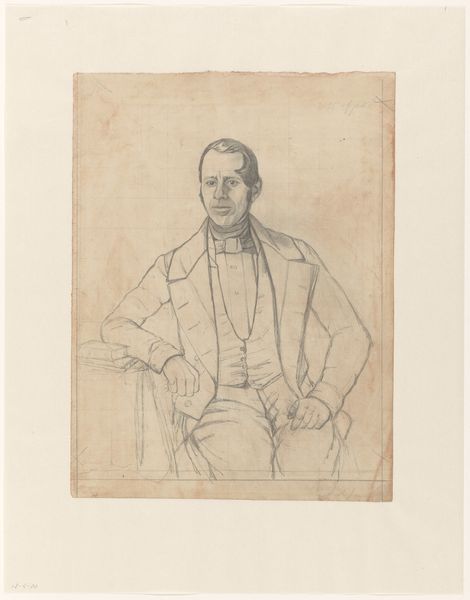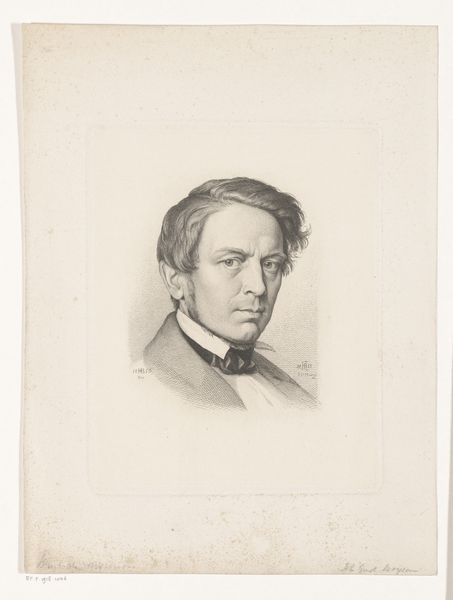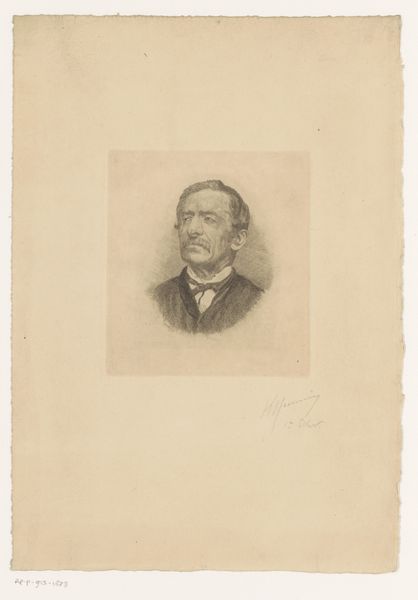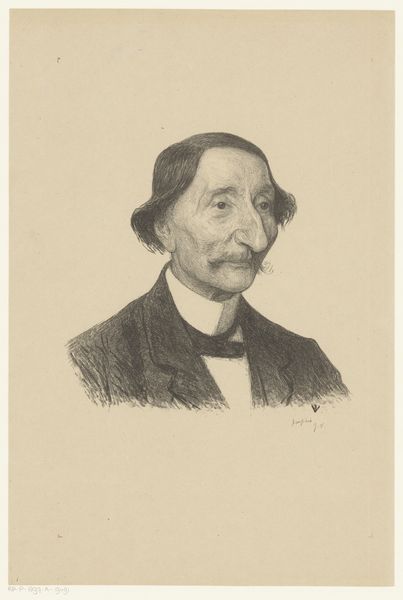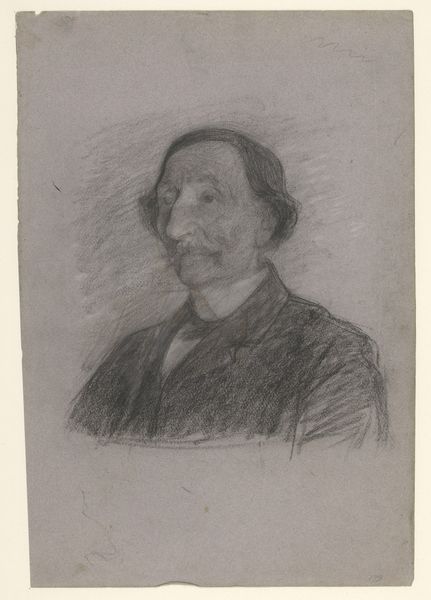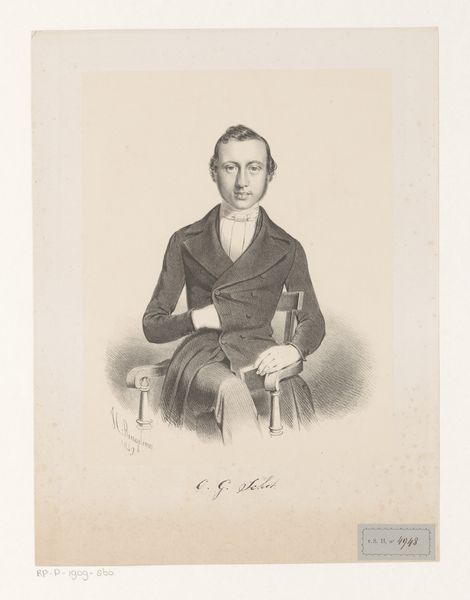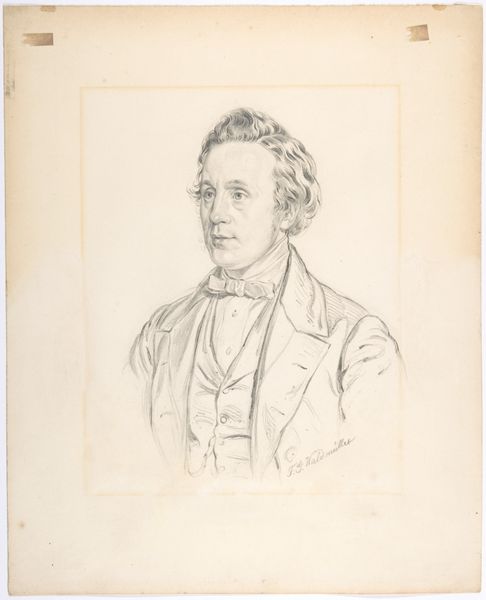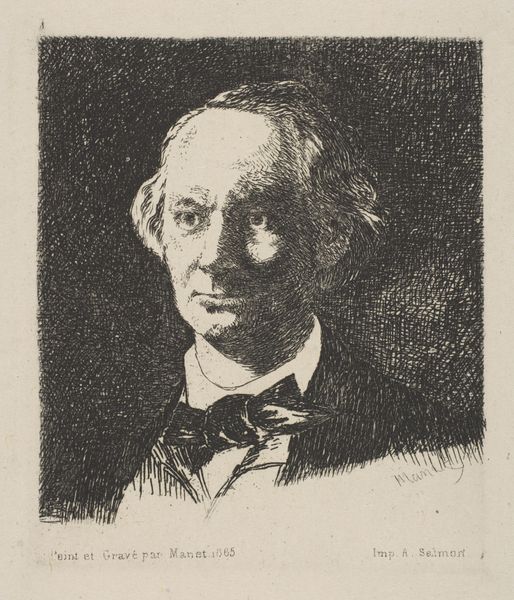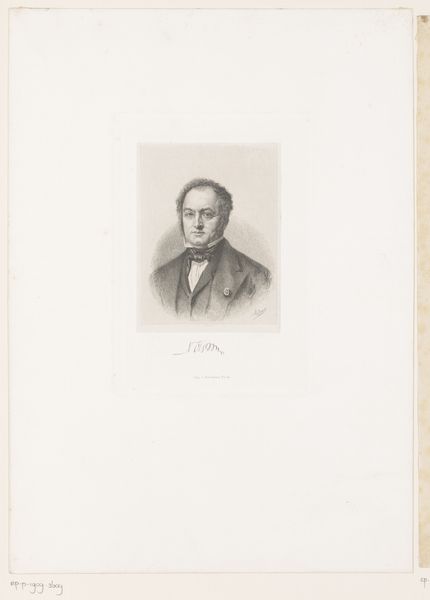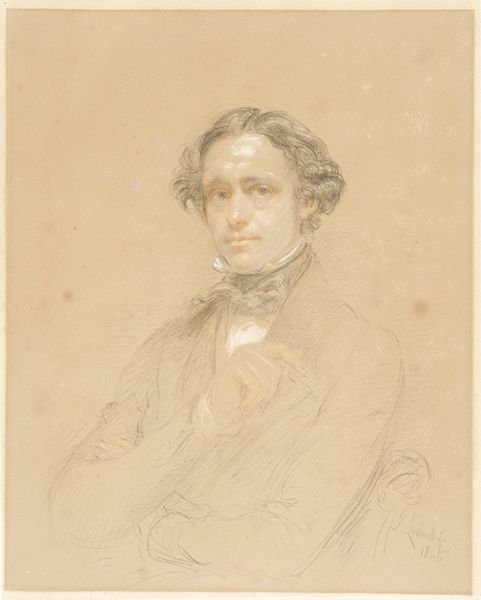
print, engraving
#
portrait
# print
#
engraving
#
realism
Dimensions: height 159 mm, width 120 mm
Copyright: Rijks Museum: Open Domain
Auguste Danse etched this portrait of an unknown man named Letellier in 1853. The man’s somber expression and formal attire reflect the visual codes of bourgeois identity in 19th-century Europe, particularly during the Second Empire in France when it was made. Prints like this one served a vital social function, circulating images of prominent individuals and solidifying their status within a visual economy of power and recognition. The Rijksmuseum itself is an institution that plays a role in how we view this image: as a historical artifact and a cultural symbol. The etching's fine lines and attention to detail speak to the technical skill valued in academic art institutions of the time. We might ask: How did the subject’s social class affect his representation? Was this portrait commissioned, and if so, by whom and for what purpose? To answer these questions, we can delve into archives, letters, and period publications to better understand the social conditions that shaped its production and reception.
Comments
No comments
Be the first to comment and join the conversation on the ultimate creative platform.
